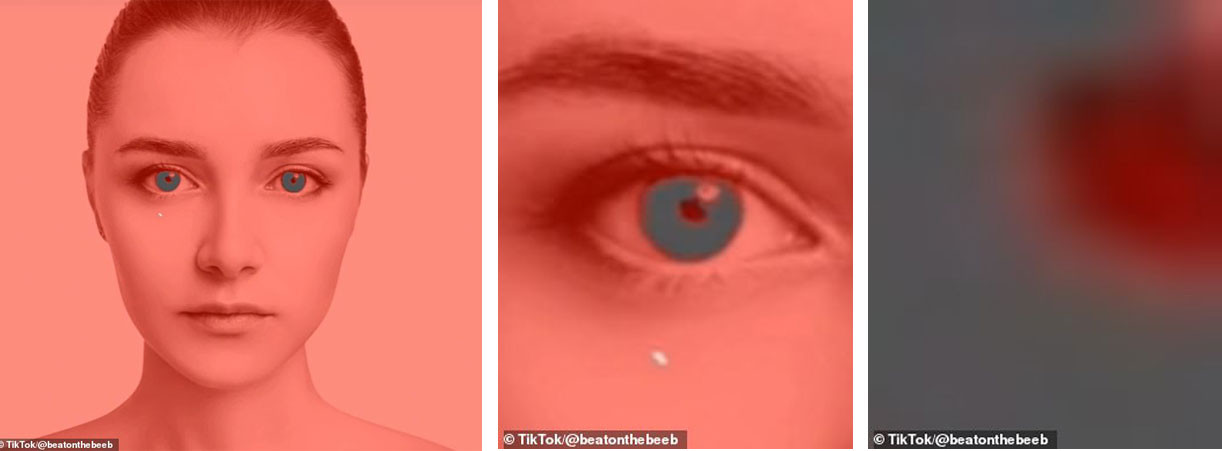What color do you think the eyes of the woman in the picture are? Your brain will probably tell you they are blue. However, this photo has a surprising optical illusion, and in fact, the model’s irises are grey.
So how does this happen? This becomes more apparent when the red filter is removed from the image and a gray bar is placed right next to the eyes.
This trick was shared on TikTok by illusionist Dean Jackson or @beatonthebeeb, who explained how it works: “Your brain detects the pigment – the gray area around the pupil – and assumes that the red filter captures the blue light. So your brain is trying to help you by putting the color blue back in the picture for you, as it should, and completely mislead you in the process.”
At the back of the human eye are cells identified as photoreceptors that respond to light entering it. These are of two types, “rods” or “cones,” and cones detect colors while rods are sensitive to motion and night vision.
There are three types of cone cells in humans, and each of them is more sensitive to a particular color, red, green, or blue.
The red filter only passes red light, so all other colors, including green and blue, should appear gray or black.
When a red filter is placed on the original black and white image of the woman, her eye color appears blue. But if our brain recognizes the context of the image (recognizes that it’s the eye) and believes it should look blue, it can interpret gray light that way. Only three percent of the world’s population has gray eyes, while a much larger eight to ten percent have blue eyes.
 Things change as you get closer to the picture.
Things change as you get closer to the picture.Therefore, when we zoom in on the image and it no longer looks like an eye, irises appear gray as they really are.
Jackson provided another example of this in a previous video of him showing an image of a gray can of Coke covered with cyan filter strips.
Filtered strips appear red for the same reason as above. Although the blue filter blocks all red light, your eye expects the color here to be red. However, unfiltered gray stripes also appear red due to the “color constancy” principle. This is the phenomenon that allows our eyes and brain to perceive something as the same color in different lighting conditions.
 There is actually no red in this picture.
There is actually no red in this picture.However, this ability can be tricked, causing a color to appear different from what it actually is if it is adjacent to another color. In this case, a blue stripe next to a gray stripe can make gray appear red.